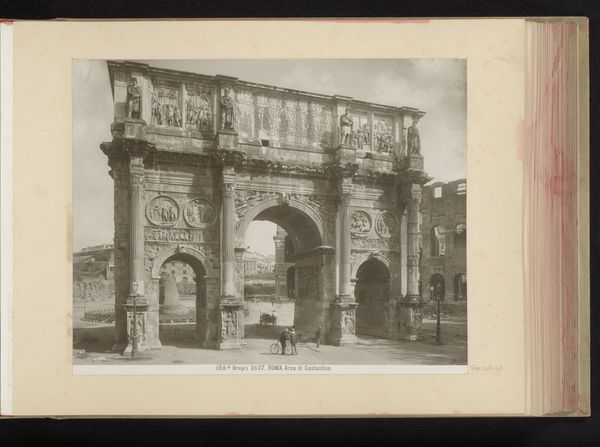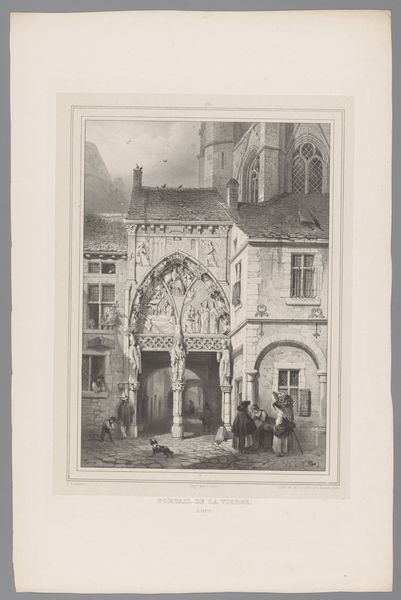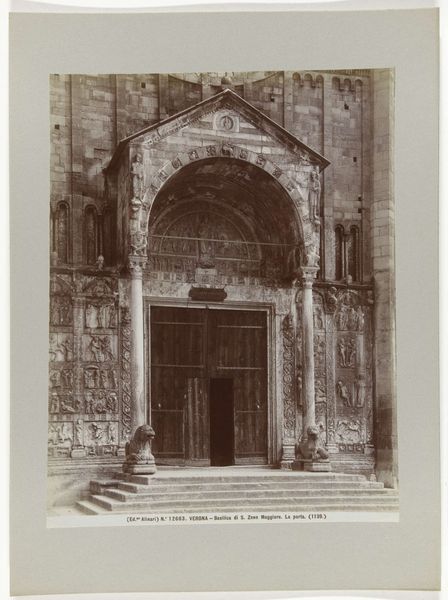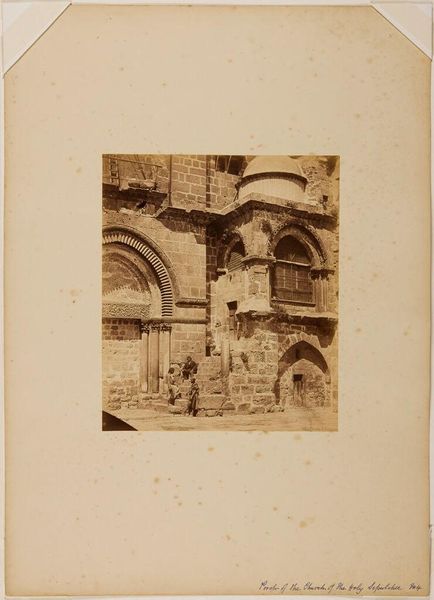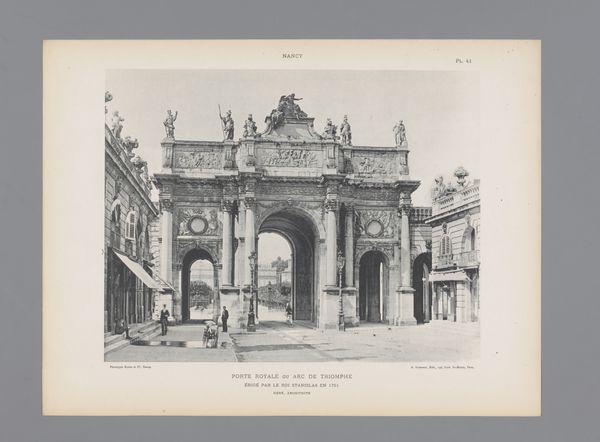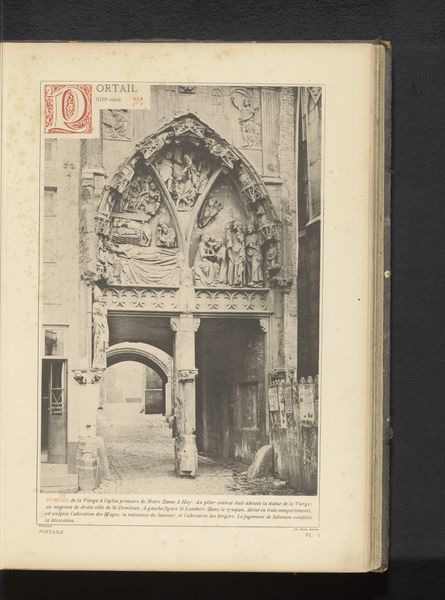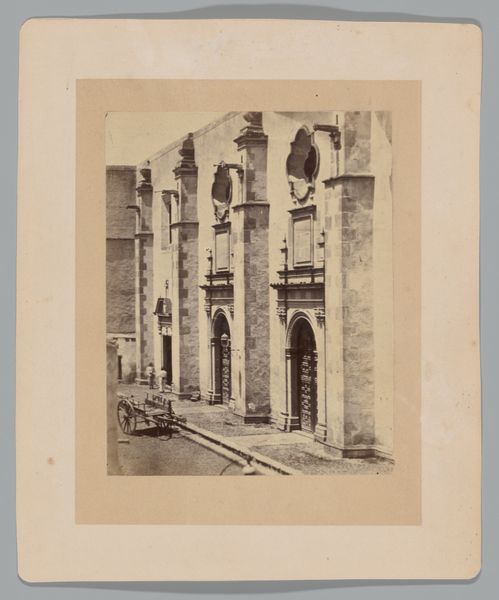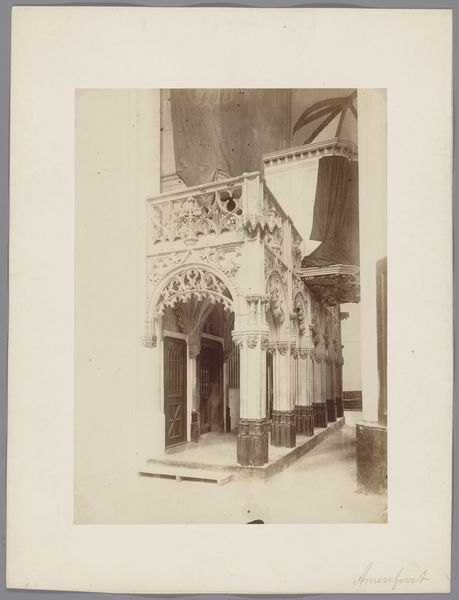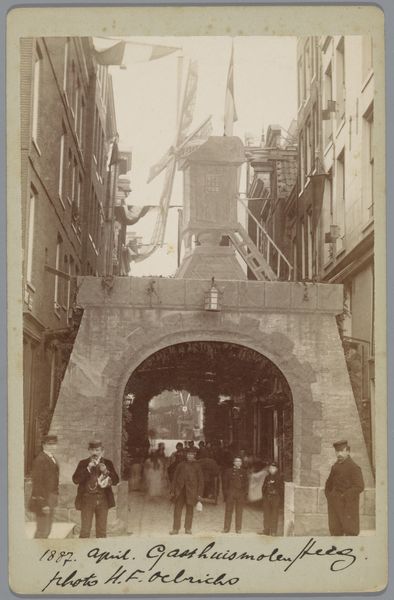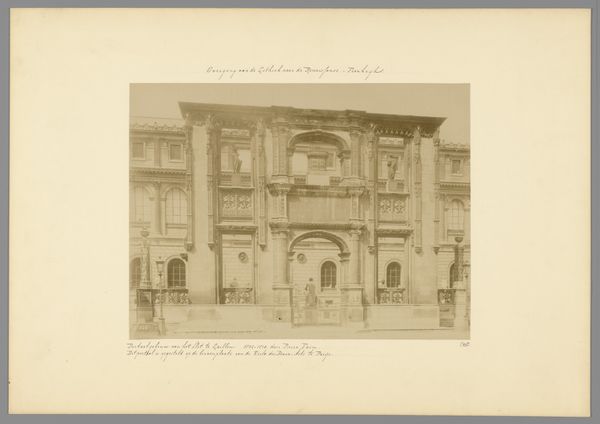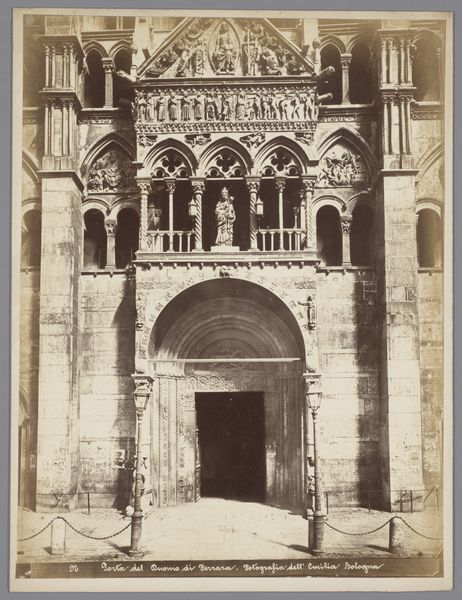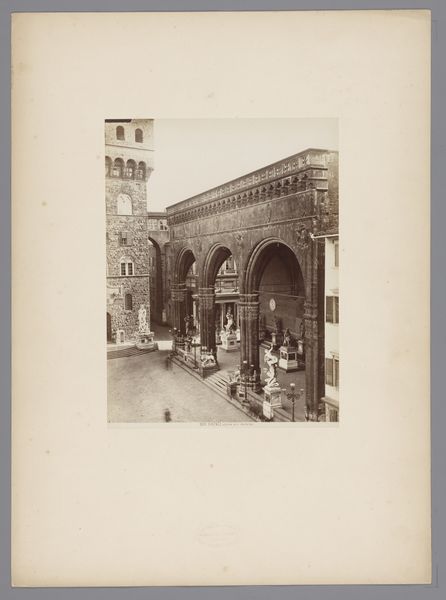
Ereboog in de Reguliersbreestraat tijdens de Aprilfeesten in 1887 Possibly 1887
0:00
0:00
henridelouw
Rijksmuseum
photography, gelatin-silver-print
#
pictorialism
#
landscape
#
photography
#
orientalism
#
gelatin-silver-print
#
cityscape
#
street
#
watercolor
Dimensions: height 269 mm, width 218 mm, height 433 mm, width 336 mm
Copyright: Rijks Museum: Open Domain
This photograph, taken by Henri de Louw in 1887, captures a temporary structure erected during the April Feasts in Amsterdam. While the photograph itself is a product of industrial processes of the late 19th century, the "Ereboog," or triumphal arch, is a fascinating example of ephemeral folk architecture. The arch, constructed from timber and plaster, is decorated with greenery and flags. It imitates classical forms, but its handmade quality is evident. What does it tell us about the socio-economic conditions that produced it? The materials themselves - wood and plaster - are relatively inexpensive, suggesting a community effort. The arch transforms the urban landscape. It’s about civic pride, but also about labor. Think of the work involved in gathering the materials, building the structure, and decorating it. It stands as a testament to the collective labor and resourcefulness of the community. Photographs like this remind us that everyday materials and forms of making are just as culturally significant as those found in museums.
Comments
No comments
Be the first to comment and join the conversation on the ultimate creative platform.


